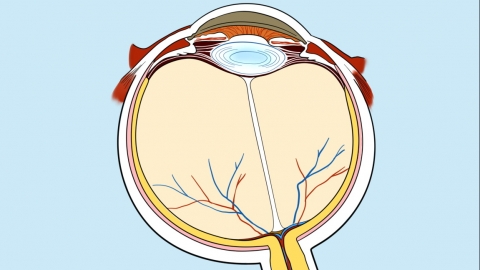What should be done for a child with myopia at the age of eight?
Myopia in eight-year-old children may be caused by hereditary factors, poor visual environments, refractive errors, pseudo-myopia, congenital cataracts, retinopathy of prematurity, and other factors. It can generally be corrected through wearing glasses, improving visual habits, medication, or surgical treatment. If any abnormalities occur, prompt medical consultation is recommended. Detailed explanations are as follows:

1. Genetic factors: If one or both parents have high myopia, children may carry myopia-related genes, which can lead to abnormal eye development and early onset of myopia. Regular vision examinations are recommended for early detection and intervention to control the progression of myopia.
2. Poor visual environment: Prolonged reading in dim lighting, extended use of electronic devices, and incorrect reading and writing postures can cause excessive eye accommodation and elongation of the eye axis, leading to myopia. The visual environment should be improved, sufficient lighting ensured, usage time of electronic devices controlled, correct reading and writing postures maintained, and outdoor activity time increased.
3. Refractive error: Abnormalities in the eye's refractive system cause incoming parallel light rays to focus in front of the retina, resulting in blurred vision and the development of myopia, often accompanied by symptoms such as squinting when viewing distant objects, tilting the head, and declining vision. Treatment may involve wearing appropriate eyeglasses or orthokeratology lenses after cycloplegic refraction testing.
4. Pseudo-myopia: Prolonged near work causes ciliary muscle spasm and abnormal lens accommodation, resulting in temporary vision loss, often accompanied by symptoms such as eye fatigue and dryness. Doctors generally recommend reducing near visual tasks, using compound tropicamide eye drops to relax the ciliary muscles, combined with eye massage and distant vision training.
5. Congenital cataract: Lens opacity affects light entry into the eye, resulting in unclear retinal imaging, which can lead to deprivation myopia over time, often accompanied by poor vision. It is recommended to use pirenoxine eye drops under medical guidance to delay lens opacity, and when conditions permit, undergo cataract phacoemulsification combined with intraocular lens implantation. Refractive correction should follow surgery.
In daily life, children should have at least two hours of outdoor activity daily, undergo regular vision and eye health examinations, and receive timely intervention if any issues are detected. Good visual habits should be cultivated in children, prolonged near work avoided, and study and rest times arranged reasonably to promote healthy eye development.




